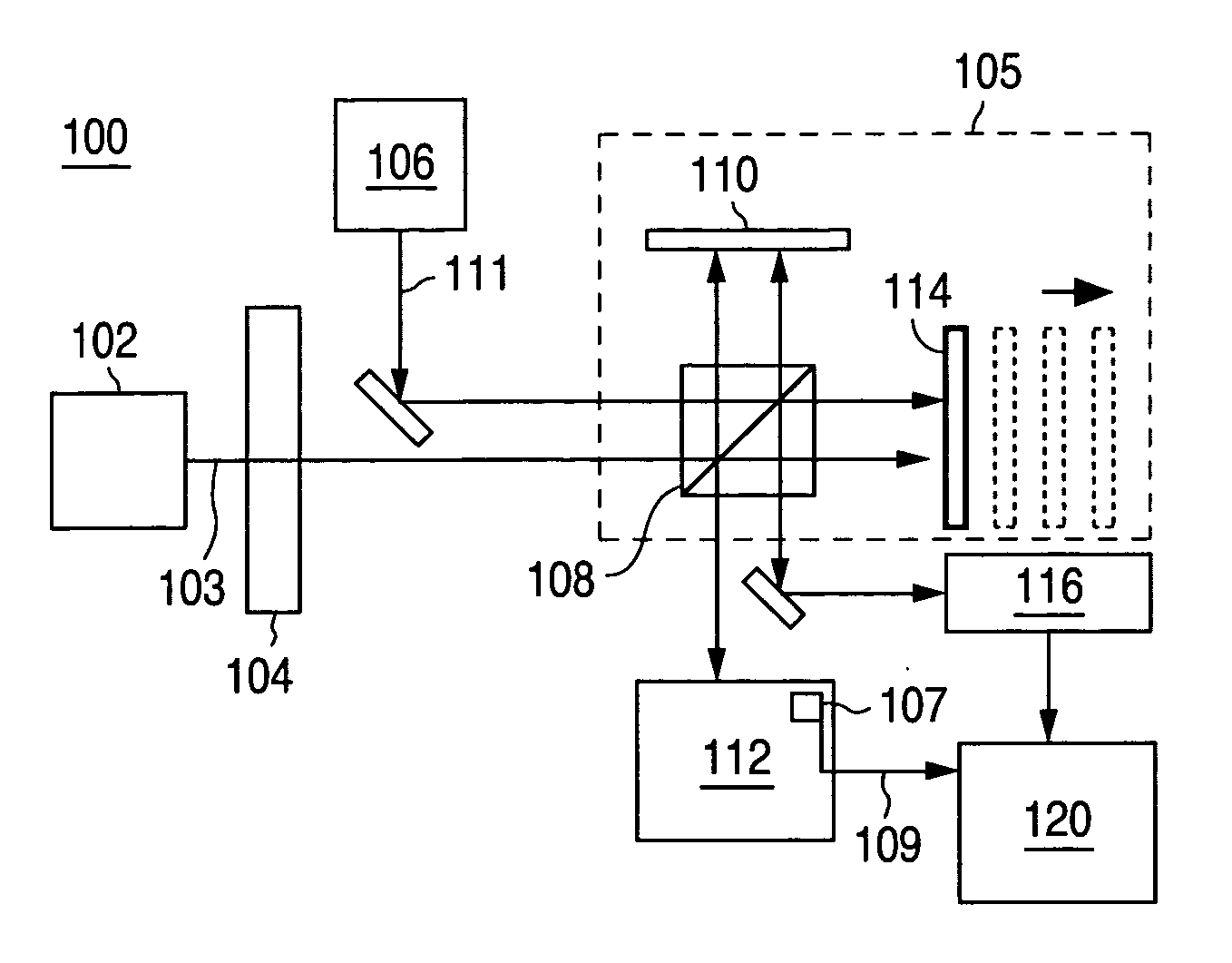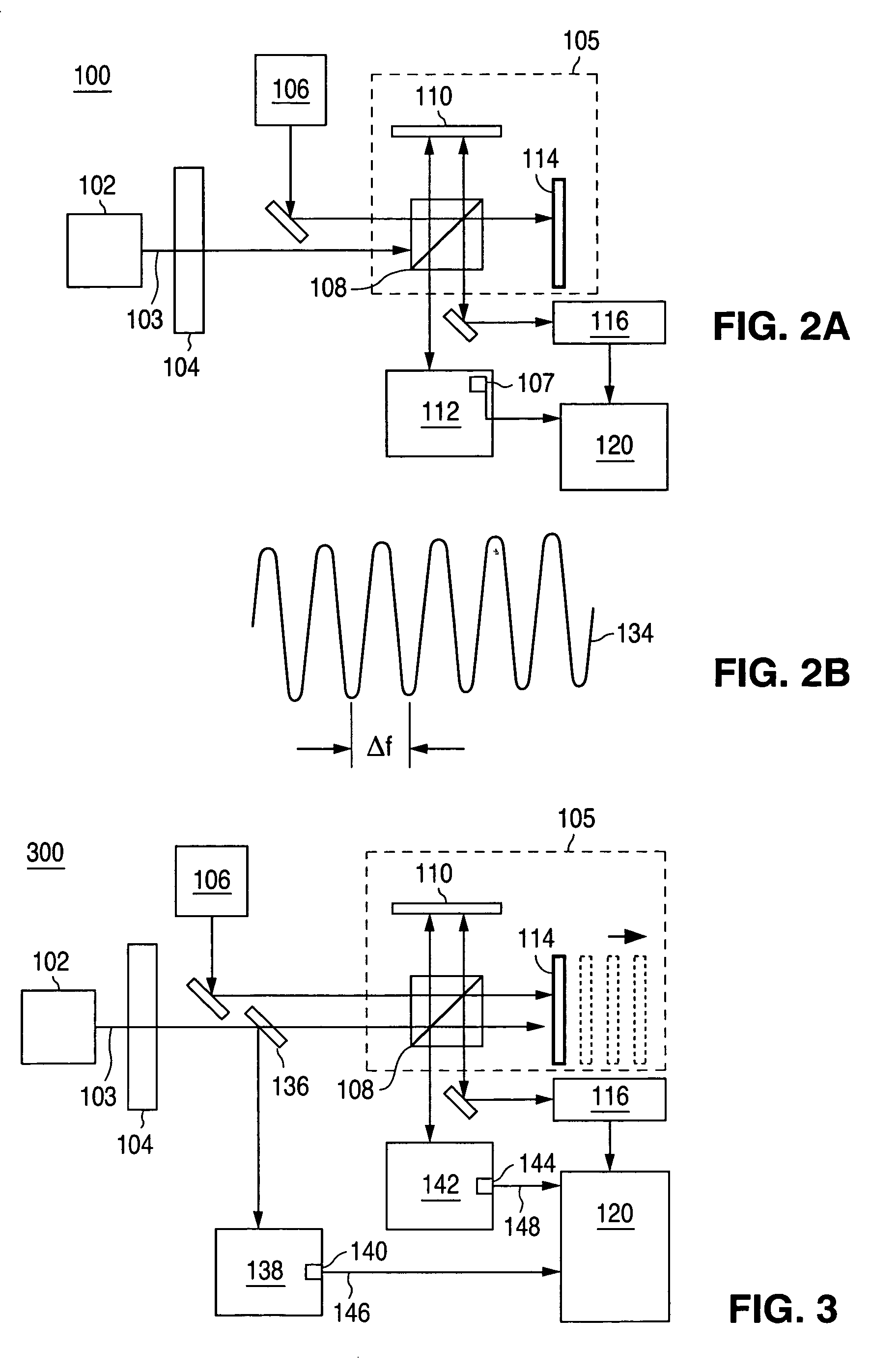System and method for interferometric laser photoacoustic spectroscopy
a laser photoacoustic spectroscopy and laser technology, applied in the field of system and method of interferometric laser photoacoustic spectroscopy, can solve the problems of limited spectral density of glow bars, poor sensitivity of ftir, and limited spectral density of ftir
- Summary
- Abstract
- Description
- Claims
- Application Information
AI Technical Summary
Problems solved by technology
Method used
Image
Examples
Embodiment Construction
[0012] When using a tunable laser in molecular spectroscopy a significant challenge can be determining the optical frequency, or wavelength, of the output laser beam. Optical frequency is important since the absorption signatures of various molecules depend on frequency, so errors in frequency can translate to misidentification of the molecule. In the IR wavelength range between 3 and 30 microns, tunable narrow linewidth lasers can sometimes abruptly change frequency, i.e. mode-hop, so there is a need not only to be able to determine relative frequency, or wavelength changes, but also to determine the absolute wavelength. An embodiment herein allows for absolute and relative frequency determinations for measurements of absorptive material. In an embodiment herein a photoacoustic detection arrangement allows for determination of the wavelength of the laser, even in the presence of global mode-hops in the energy output by the laser, which can occur as the laser is accessing different ...
PUM
 Login to View More
Login to View More Abstract
Description
Claims
Application Information
 Login to View More
Login to View More - R&D
- Intellectual Property
- Life Sciences
- Materials
- Tech Scout
- Unparalleled Data Quality
- Higher Quality Content
- 60% Fewer Hallucinations
Browse by: Latest US Patents, China's latest patents, Technical Efficacy Thesaurus, Application Domain, Technology Topic, Popular Technical Reports.
© 2025 PatSnap. All rights reserved.Legal|Privacy policy|Modern Slavery Act Transparency Statement|Sitemap|About US| Contact US: help@patsnap.com



